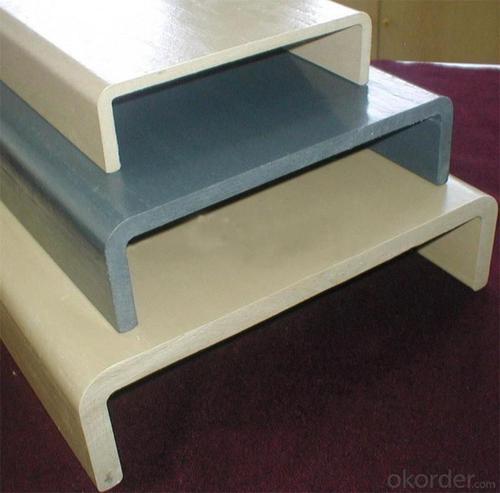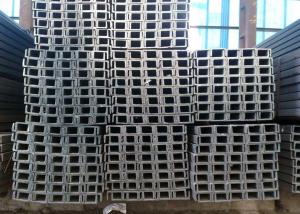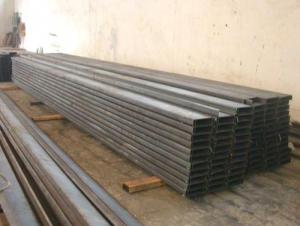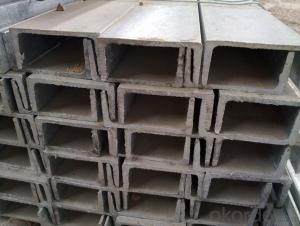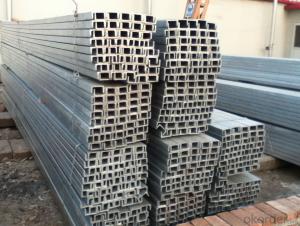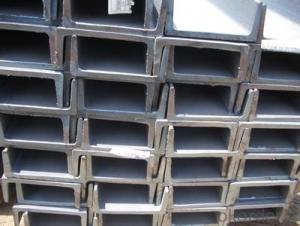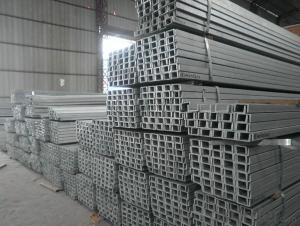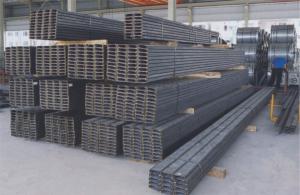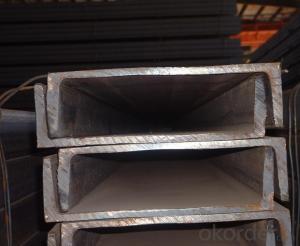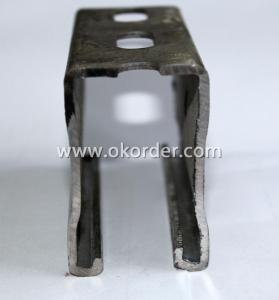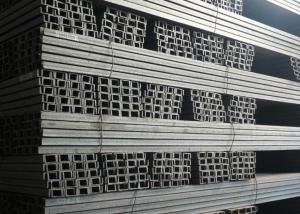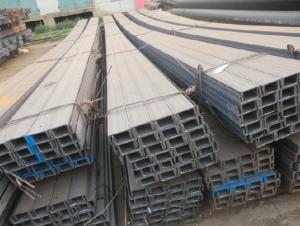Steel JIS U CHANNEL 50-300MM GB Standard JIS G3192
- Loading Port:
- Tianjin
- Payment Terms:
- TT or LC
- Min Order Qty:
- 25 m.t.
- Supply Capability:
- 200000 m.t./month
OKorder Service Pledge
OKorder Financial Service
You Might Also Like
Product Description:
OKorder is offering high quality Hot Rolled Steel I-Beams at great prices with worldwide shipping. Our supplier is a world-class manufacturer of steel, with our products utilized the world over. OKorder annually supplies products to European, North American and Asian markets. We provide quotations within 24 hours of receiving an inquiry and guarantee competitive prices.
Product Applications:
According to the needs of different structures, Angle can compose to different force support component, and also can be the connections between components. It is widely used in various building structures and engineering structures such as roof beams, bridges, transmission towers, hoisting machinery and transport machinery, ships, industrial furnaces, reaction tower, container frame and warehouse etc
Product Advantages:
OKorder's Steel I-Beams are durable, strong, and resist corrosion.
Main Product Features:
· Premium quality
· Prompt delivery & seaworthy packing (30 days after receiving deposit)
· Corrosion resistance
· Can be recycled and reused
· Mill test certification
· Professional Service
· Competitive pricing
Product Specifications:
Manufacture: Hot rolled
Grade: Q195 – 235
Certificates: ISO, SGS, BV, CIQ
Length: 6m – 12m, as per customer request
Packaging: Export packing, nude packing, bundled
Sizes: 25mm-250mm | ||||||||||||
a*t | ||||||||||||
25*2.5-4.0 | 70*6.0-9.0 | 130*9.0-15 | ||||||||||
30*2.5-6.6 | 75*6.0-9.0 | 140*10-14 | ||||||||||
36*3.0-5.0 | 80*5.0-10 | 150*10-20 | ||||||||||
38*2.3-6.0 | 90*7.0-10 | 160*10-16 | ||||||||||
40*3.0-5.0 | 100*6.0-12 | 175*12-15 | ||||||||||
45*4.0-6.0 | 110*8.0-10 | 180*12-18 | ||||||||||
50*4.0-6.0 | 120*6.0-15 | 200*14-25 | ||||||||||
60*4.0-8.0 | 125*8.0-14 | 250*25 | ||||||||||
FAQ:
Q1: What makes stainless steel stainless?
A1: Stainless steel must contain at least 10.5 % chromium. It is this element that reacts with the oxygen in the air to form a complex chrome-oxide surface layer that is invisible but strong enough to prevent further oxygen from "staining" (rusting) the surface. Higher levels of chromium and the addition of other alloying elements such as nickel and molybdenum enhance this surface layer and improve the corrosion resistance of the stainless material.
Q2: Can stainless steel rust?
A2: Stainless does not "rust" as you think of regular steel rusting with a red oxide on the surface that flakes off. If you see red rust it is probably due to some iron particles that have contaminated the surface of the stainless steel and it is these iron particles that are rusting. Look at the source of the rusting and see if you can remove it from the surface.
Q3: How do you package the angle steel when shipping?
A3: All goods are packed in bundles with steel strips and shipped by container or break bulk.
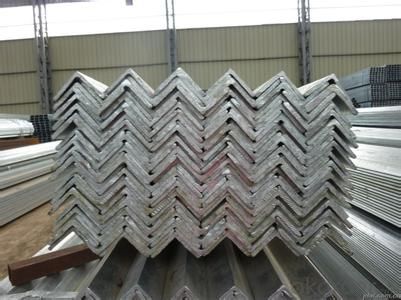
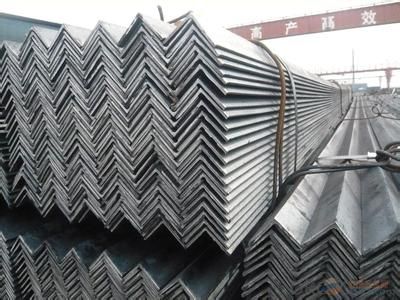
- Q: How do steel channels contribute to the overall energy efficiency of a structure?
- Steel channels can contribute to the overall energy efficiency of a structure in several ways. Firstly, steel channels are commonly used in the construction of walls and roofs. These channels provide structural support and help distribute the weight of the building evenly. By using steel channels, the overall weight of the structure can be reduced, leading to lower energy consumption during construction and throughout the building's lifespan. Additionally, steel channels can be designed to provide insulation properties. Thermal bridging is a common issue in buildings where heat is transferred through materials that have higher thermal conductivity. However, steel channels can be engineered to minimize thermal bridging by incorporating insulation materials or thermal breaks. This reduces the transfer of heat between the interior and exterior of the building, resulting in improved energy efficiency. Furthermore, steel channels are known for their durability and strength. This allows for the construction of larger spans and open spaces, reducing the need for additional support columns or walls. By maximizing the use of open spaces, natural light and ventilation can be optimized, reducing the reliance on artificial lighting and mechanical HVAC systems. This not only decreases energy consumption but also enhances the overall comfort and well-being of the occupants. Lastly, steel channels have the advantage of being recyclable. Steel is one of the most recycled materials in the world, and using recycled steel channels in construction can significantly reduce the environmental impact of building projects. The energy required to produce recycled steel is much lower compared to virgin steel production, further contributing to the overall energy efficiency of the structure. In conclusion, steel channels contribute to the overall energy efficiency of a structure by reducing weight, minimizing thermal bridging, enabling open spaces for natural lighting and ventilation, and being recyclable. By incorporating steel channels in construction, buildings can achieve better energy performance, reducing energy consumption, and promoting sustainability.
- Q: 6.3# how long is the channel length?
- Standard Specification for hot rolled plain channel steel:63*40*4.8 6.3# 6.635 KG/M channel measurement theoretical weight weight calculation theory for calculation of steel kg (kg). The basic formula is: W (weight, kg) = F (basal area mm2) * L (length m) * P (density g/cm3) * 1/1000 steel density: 7.85g/cm3.63**40 *4.8 6.3# 6.635
- Q: Are steel channels suitable for telecommunications infrastructure projects?
- Yes, steel channels are suitable for telecommunications infrastructure projects. Steel channels provide the necessary strength, durability, and versatility required for supporting and protecting telecommunication cables and equipment. They can be easily installed and adjusted, making them an ideal choice for various telecommunication applications. Additionally, steel channels offer excellent corrosion resistance and can withstand harsh environmental conditions, ensuring long-term reliability for telecommunications infrastructure.
- Q: 16A channel steel size requirements are national standards Oh!
- The national standard for channel steels is "hot rolled steel" GB/T706-2008
- Q: Can steel channels be used in the construction of HVAC support structures?
- Yes, steel channels can be used in the construction of HVAC support structures. Steel channels provide excellent structural support and can be easily fabricated to the required dimensions. They offer high strength and durability, making them suitable for supporting HVAC equipment such as ductwork, pipes, and air handling units. Steel channels also have the advantage of being resistant to corrosion, which is beneficial in HVAC environments where moisture and condensation are common.
- Q: What are the common safety considerations in the design of steel channels?
- When designing steel channels, there are several common safety considerations that need to be taken into account to ensure the overall safety and structural integrity of the channels. These considerations include: 1. Load-bearing capacity: One of the primary safety concerns is ensuring that the steel channels have sufficient load-bearing capacity to support the intended loads. This involves analyzing the expected loads, such as the weight of the materials or equipment that will be placed on the channels, and designing the channels with adequate strength and stiffness to withstand these loads without failure. 2. Material selection: The choice of material for the steel channels is another important safety consideration. The material should have the necessary strength and durability to withstand the anticipated loads, as well as resistance to corrosion, fire, and other potential hazards. The material should also meet the relevant industry standards and specifications. 3. Structural stability: The design of steel channels should ensure their structural stability, which involves considerations such as the proper sizing and positioning of the channels, the use of appropriate connections, and the incorporation of bracing or other reinforcement elements if needed. Structural stability is crucial to prevent buckling, collapse, or other forms of failure under load. 4. Fire resistance: In certain applications, fire resistance is a critical safety consideration for steel channels. Depending on the location and purpose of the channels, they may need to be designed to withstand high temperatures and prevent the spread of fire. This can involve using fire-resistant coatings or insulation materials and designing for proper ventilation to prevent the buildup of heat. 5. Accessibility and ergonomics: Safety considerations also extend to the accessibility and ergonomics of the steel channels, especially in industrial or construction settings. Designers should ensure that the channels are easily accessible for installation, inspection, and maintenance tasks, and that they are designed to minimize potential hazards or risks to workers who may interact with them. 6. Compliance with codes and regulations: Finally, it is essential to consider the relevant codes, standards, and regulations when designing steel channels. Compliance with these requirements ensures that the channels meet the necessary safety standards and are fit for their intended purpose. By addressing these common safety considerations in the design of steel channels, engineers and designers can create structures that are safe, reliable, and able to withstand the intended loads and environmental conditions.
- Q: Are steel channels available in pre-galvanized finishes?
- Yes, steel channels are available in pre-galvanized finishes.
- Q: 24 meters long, 4 meters per column, 6 meters wide. How large channel steel should be used to make the beam?
- The channel should not be used as bearing beam, 6 meters 4 meters across the Bay 14~16 I-steel beam available 1.2~1.5 m spacing C or Z shape.
- Q: Can steel channels be used for roofing applications?
- Steel channels are not commonly utilized for roofing purposes. They are typically employed in construction projects for supporting beams, columns, and framing. Instead, roofing applications typically involve the use of materials like metal panels, asphalt shingles, clay or concrete tiles, or even thatched roofing. These materials are specifically designed and manufactured to ensure weatherproofing, insulation, and durability, providing protection to the structure and its inhabitants against external elements. Although steel channels may have other significant uses in construction, they lack the necessary qualities required for an effective and long-lasting roof, thus rendering them unsuitable for roofing applications.
- Q: What are the typical tolerances for steel channels?
- The typical tolerances for steel channels vary depending on the specific dimension and quality requirements. However, common tolerances for steel channels generally fall within a range of +/- 0.005 to 0.010 inches for dimensions such as width, depth, and thickness.
Send your message to us
Steel JIS U CHANNEL 50-300MM GB Standard JIS G3192
- Loading Port:
- Tianjin
- Payment Terms:
- TT or LC
- Min Order Qty:
- 25 m.t.
- Supply Capability:
- 200000 m.t./month
OKorder Service Pledge
OKorder Financial Service
Similar products
Hot products
Hot Searches
Related keywords



